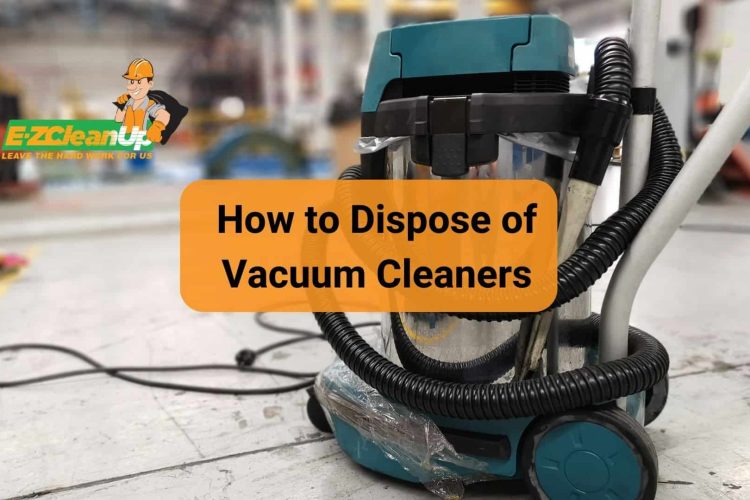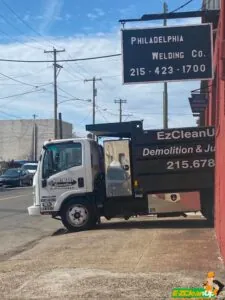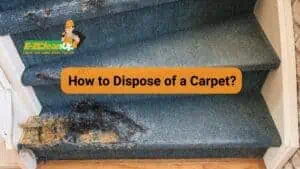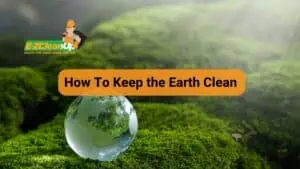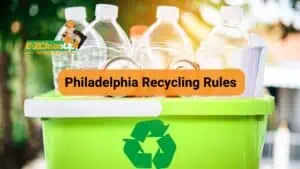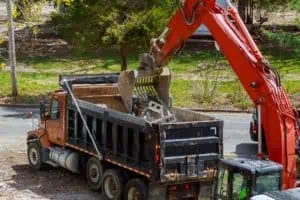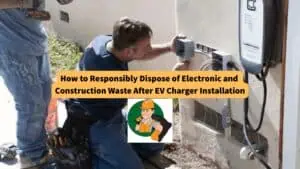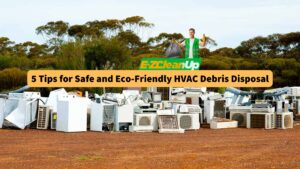To dispose of a vacuum cleaner, recycle it at a local e-waste facility or scrap yard where metal and plastic components can be processed. Alternatively, consider donating or selling functional units. Recycling prevents environmental harm and supports sustainable waste management.
Read on to learn more about how to dispose of vacuum cleaners responsibly.
Recycling Options for Vacuum Cleaners
When it’s time to recycle your vacuum cleaner, the first step is to find a recycling center. These facilities are equipped to handle e-waste, including your old vacuum. Most vacuums are made of metal and plastic, making them suitable for these centers.
It’s not just about getting rid of an unwanted item. It’s about doing it the right way. Recycling your vacuum can prevent it from ending up in a landfill and causing environmental harm. By choosing to recycle, you’re taking a step towards responsible waste management.
Understanding Material Segregation
Did you know that about 90% of your vacuum cleaner is recyclable? That’s right, the metal and plastic components can be given a new life. This is where material segregation comes in. It’s about breaking down the vacuum into its recyclable parts.
This process ensures that each material is handled correctly and efficiently. By understanding this, you’re not just throwing away an appliance. You’re contributing to a cycle that keeps valuable materials in use.
Preparing the Vacuum for Recycling
If repairing your vacuum isn’t an option, consider taking it to a scrap yard. They’ll be interested in the metal parts; you might even get paid for some of them.
But it’s more than just making a few bucks. It’s about playing your part in reducing e-waste. Proper recycling of vacuums prevents environmental damage and supports the recycling industry.
Tossing your vacuum in the general trash isn’t a good idea. It can harm the environment and even be illegal in some areas. When your vacuum reaches the end of its life, choose recycling. It’s a simple yet impactful way to support environmental sustainability and responsible waste management.
Alternative Disposal Methods
Here are the other things you can do to your old vacuum:
Donation and Reuse Options
Thinking of tossing out your old vacuum? Consider donating or reusing it first. Many items, including vacuums that are still functional, can find a second life. Charities and organizations often accept such donations. They pass them on to those who can use them.
Selling for Parts or as Second-hand
Your old vacuum could be worth more than you think. If it’s still in decent shape, consider selling it as a second-hand item. Alternatively, selling it for parts is also a viable option. This approach not only benefits you financially but also contributes to waste reduction.
Special Disposal Programs and Events
Look out for special disposal programs and events in your area. Many cities and counties hold household disposal events. These are great for getting rid of household hazardous waste.
They usually happen once or twice a year at specific drop-off points. Additionally, some waste management companies offer hazardous disposal services on designated days.
These options might come with restrictions and additional costs, but they’re worth considering. It’s about being responsible and choosing the right disposal method. Participating in these programs aligns with the “Three Rs” approach to waste management: reduce, reuse, and recycle.
Legal and Safety Considerations in Handling Vacuum Batteries
Before you dispose of any batteries, it’s crucial to check the rules in your area. Local, state, and federal regulations can differ. They outline specific methods and guidelines for battery disposal. Some states have strict laws about how to dispose of batteries, especially rechargeable ones.
Handling Batteries and Electrical Components
Dealing with batteries and electrical components requires caution. Workers handling these items need proper training and equipment. This is to safeguard against hazardous substances.
Batteries can contain toxic chemicals like cadmium, lead, lithium, or sulfuric acid. If they’re damaged, they can leak and cause serious environmental harm.
Safety Measures in Disposal
When it comes to disposing of lithium batteries, there are extra precautions to consider. These include following universal waste standards for storage and adhering to transportation standards set by the DOT for lithium batteries.
Familiarize yourself with regulations like the Mercury-Containing and Rechargeable Battery Management Act (the Battery Act) and the Universal Waste Rule of Battery Regulations. These are designed to ensure batteries are disposed of properly and don’t end up causing harm in landfills or to the environment.
If you’re dealing with a large quantity of used lithium-ion batteries, it’s wise to consult with professional waste management services or hazardous material disposal experts. They can provide the necessary guidance and assistance to ensure safety and compliance.
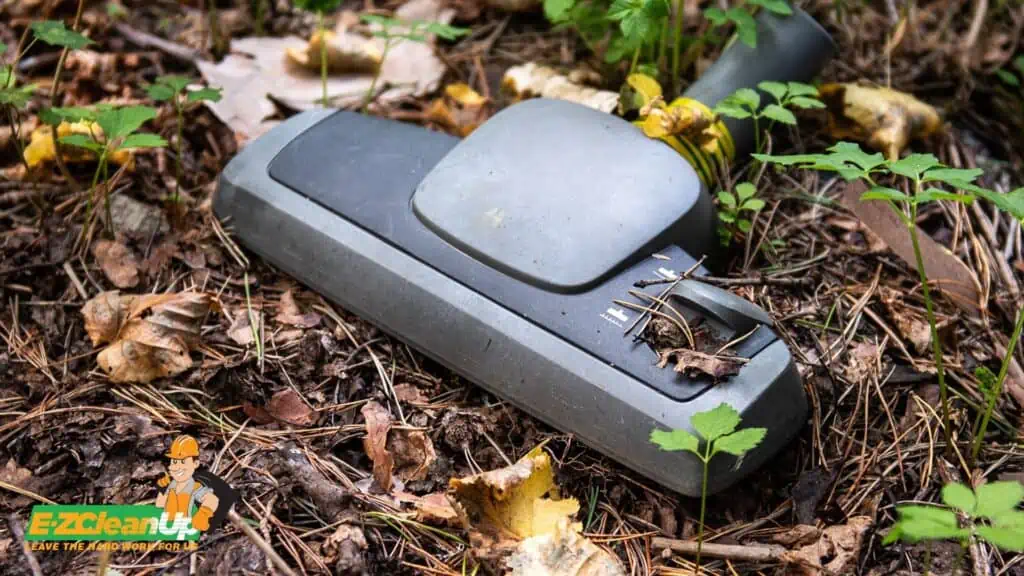
Best Practices in Vacuum Cleaner Disposal
Recycling your vacuum cleaner is the greenest way to go. These machines are a mix of rubber, plastic, and metal, all of which can be recycled. This is way better than letting them end up in a landfill.
In places like California, throwing vacuums in the trash is illegal. They’re considered e-waste and pose risks to the environment and health. So, what can you do? Many recycling centers take vacuums, given that most parts are recyclable. Scrap yards might be an option, too. They often accept these appliances for recycling.
If your vacuum still has some life left in it, selling its functional parts is a smart move. Some electronic stores also offer recycling programs for old appliances. You could even get creative and repurpose your vacuum. It’s about thinking outside the box and finding new uses for it.
Reducing Environmental Impact
By recycling vacuums, we cut down on e-waste. This means less energy wasted and fewer toxic fumes released into our environment. But it’s not just about what we do with old vacuums.
It’s also about being mindful of our consumption. Choosing appliances that are durable and repairable helps, too. The less we need to dispose of, the better for our environment. It’s about making choices that have a positive impact, both now and in the future.
Future Trends in Appliance Disposal
Looking ahead, the way we dispose of appliances like vacuum cleaners is evolving. We’re moving towards more sustainable practices. This includes better recycling technologies and more efficient ways to break down and reuse materials. There’s also a growing awareness about the importance of eco-friendly disposal.
This could lead to more laws and regulations that promote recycling and responsible waste management. We’re also seeing more companies offering take-back programs for old appliances.
The trend is clear. We’re heading towards a future where appliance disposal is more environmentally conscious. It’s about being proactive and adapting to these changes for a cleaner, greener planet.
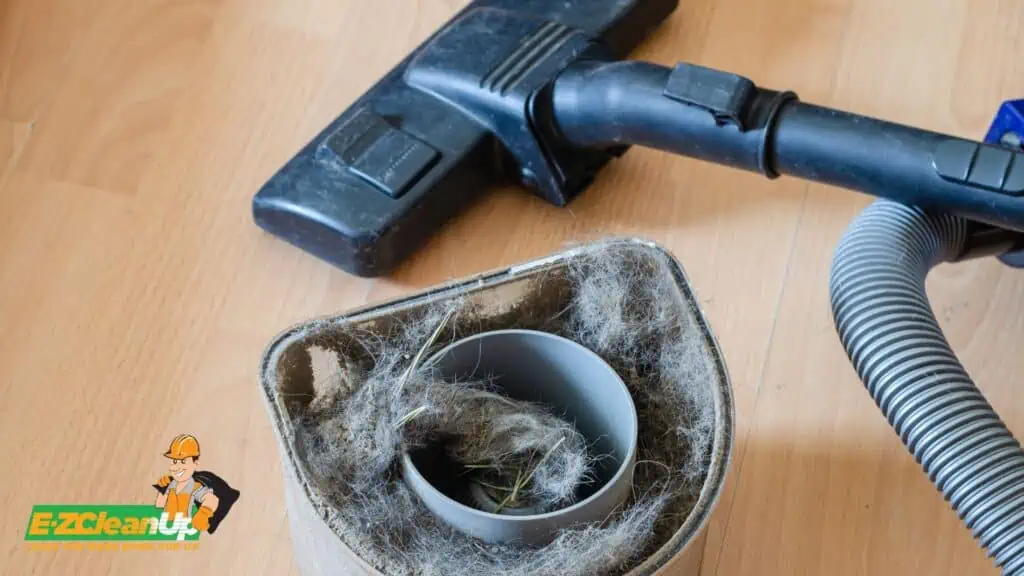
Evaluating Your Vacuum Cleaner’s Condition
When your vacuum starts acting up, the first step is to check if it can be fixed. Look into the availability of spare parts. Can you easily get what you need?
Next, think about repair services. Are there skilled technicians who can do the job? Don’t forget to consider the warranty and support from the manufacturer.
Good customer support can make a big difference. It’s about weighing the cost and effort against the benefits of keeping your vacuum running.
Identifying Recyclable Components
Let’s talk recycling. Your vacuum cleaner is more than just a cleaning tool; it’s a collection of recyclable parts. Start by checking the user manual. What does it say about recycling? You can also contact the manufacturer. They should tell you which parts of your vacuum can be recycled.
We’re talking about plastic casings, metal bits, and even electronic components. It’s a crucial step in managing waste sustainably.
Determining End-of-Life Status
How do you know when it’s time to say goodbye to your vacuum cleaner? It’s about more than just whether it turns on or not. Consider its cleaning performance. Also, think about repair costs.
Remember, a vacuum’s ability to capture dust and allergens is crucial. Some technologies are better than others. Look at what Consumer Reports says about different vacuum brands.
They test things like performance on various surfaces, noise levels, and ease of use. Their findings can help you decide. It’s about choosing wisely and responsibly, not just for your home but for the environment, too.
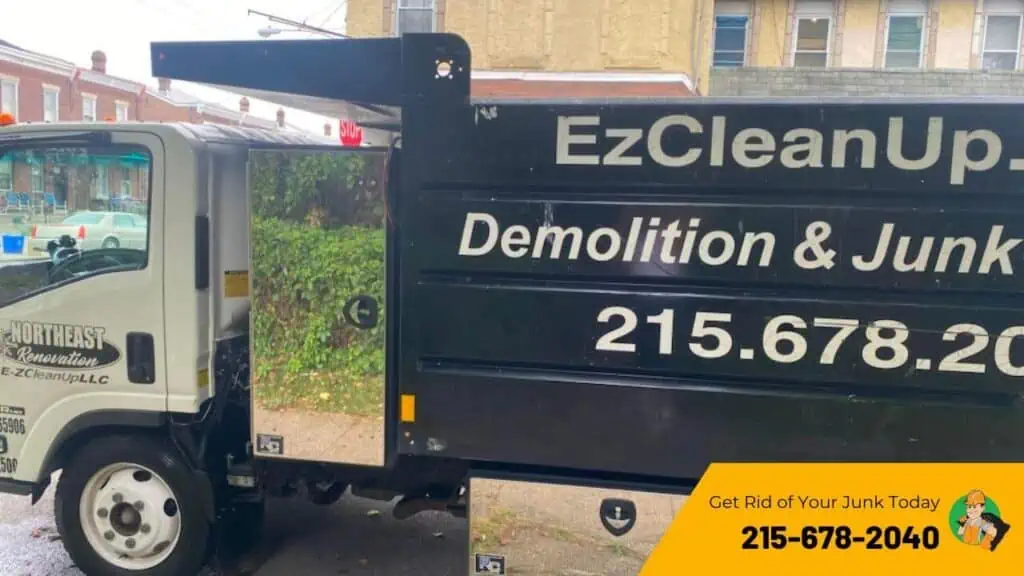
EZ CleanUp: Your Partner in Responsible Junk Disposal
When it’s time to part ways with your old vacuum cleaner, EZ CleanUp is here to help. Based in Philadelphia, we’re your local experts in eco-friendly junk removal. We understand that getting rid of clutter, be it an outdated vacuum cleaner, an old mattress, or a bulky fish tank, should be hassle-free and environmentally responsible. That’s where our services shine.
Offering competitively priced junk removal, we ensure you won’t break the bank while decluttering. We pride ourselves on our transparent pricing, which means no surprise charges.
Our eco-friendly approach ensures your discarded items, including vacuum cleaners, are disposed of in a way that benefits the planet. We recycle and donate wherever possible, reflecting our commitment to sustainability.
Need quick service? Our team is ready to swiftly remove your junk, ensuring a prompt and efficient cleanup. With our experienced professionals, you can trust that your junk removal, big or small, is in capable hands.
At EZ CleanUp, we don’t just remove your junk; we offer a solution that’s quick, eco-conscious, and tailored to your needs. Contact us today for a free on-site estimate and take the first step towards a clutter-free, environmentally friendly space.

